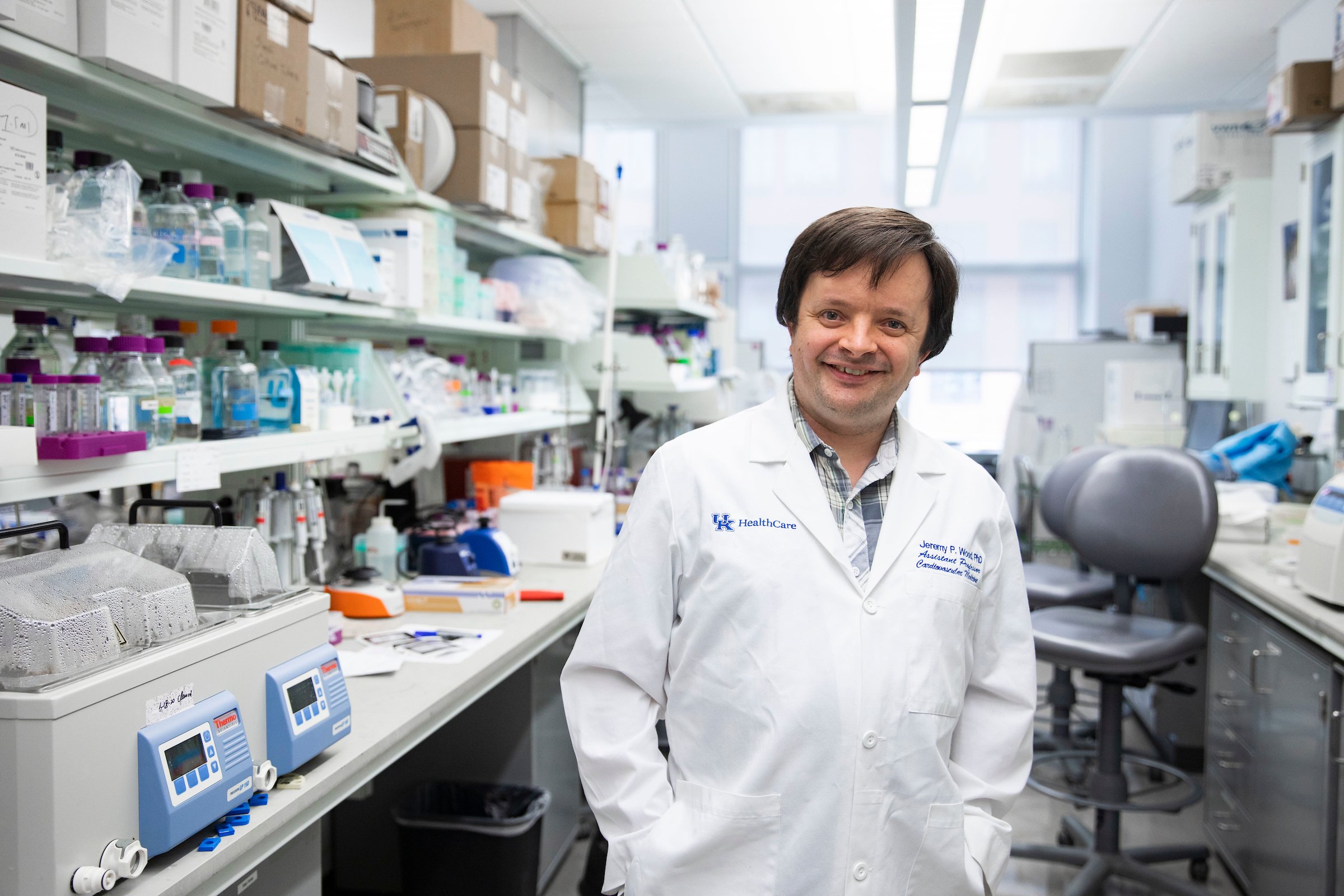The research led by Jeremy Wood, Zach Porterfield and Jamie Sturgill in the Department of Internal Medicine; Beth Garvy in Microbiology, Immunology & Molecular Genetics; and Wally Whiteheart in Molecular & Cellular Biochemistry, suggests that localized inflammation in the lungs caused by COVID-19 may be responsible for the increased presence of blood clots in patients. The study also provides evidence suggesting the risk of thrombosis could persist after the infection clears.
The study examined the blood of 30 COVID-19 patients including 15 who were inpatients in the intensive care unit, and 15 who received care as outpatients at UK’s Infectious Diseases Clinic, along with eight disease-free volunteers who acted as a control group.
Compared to baseline, the COVID-19 patients had elevated levels of tissue factor, a protein found in blood that initiates the clotting process. Patients also had reduced levels of protein S, an anticoagulant that helps prevent blood clotting.
The researchers concluded that lung inflammation caused by COVID-19 is what leads to a decrease in protein S. This inflammation also causes immune and possible endothelial cell activation, which leads to increased tissue factor protein.
“What we’ve learned is that the clotting is not caused by anything systemic. Localized inflammation in the lungs is what’s driving this whole process,” Wood said. “With an increase in tissue factor and a deficiency in protein S, COVID-19 patients get more blood clotting without the ability to shut it down or control it.”
The study additionally showed that protein S levels remained low in some patients even after they tested negative for COVID-19, which suggests that blood clotting issues may persist after infection and long-term monitoring of thrombotic risk may be necessary.
Wood says this preliminary data could be a cause for concern. Certain viruses like HIV are linked to a long-term deficiency in protein S, which causes an ongoing risk of thrombosis in patients. It is not yet known if COVID-19 could cause a similar persisting protein S deficiency.
“Tissue factor and protein S are good markers to monitor for long-term thrombosis risk and the data suggest that we need to be monitoring these patients because we’re not seeing these parameters corrected immediately,” Wood said.
The research team recently received a grant from UK’s Center for Clinical and Translational Science (CCTS) to begin a longitudinal study to look at these levels in patients over the next year.
“This will help answer the question: will this risk remain like it is in the HIV patients or will it go away?”
The study was funded in part by an Alliance Grant through the College of Medicine as well as UK’s COVID-19 Unified Research Experts (CURE) Alliance through the Vice President for Research and the College of Medicine and the CCTS. It was a product of collaboration between a number of different groups at UK that have been studying COVID-19.
Additional collaborators include Martha Sim, Meenakshi Banerjee and Hammodah Alfar in the Department of Molecular and Cellular Biochemistry; Melissa Hollifield and Jerry Woodward with Microbiology, Immunology and Molecular Genetics; Xian Li with the Saha Cardiovascular Research Center; Alice Thornton with the Division of Infectious Disease; and Gail Sievert, Marietta Barton-Baxter and Kenneth Campbell with CCTS.


